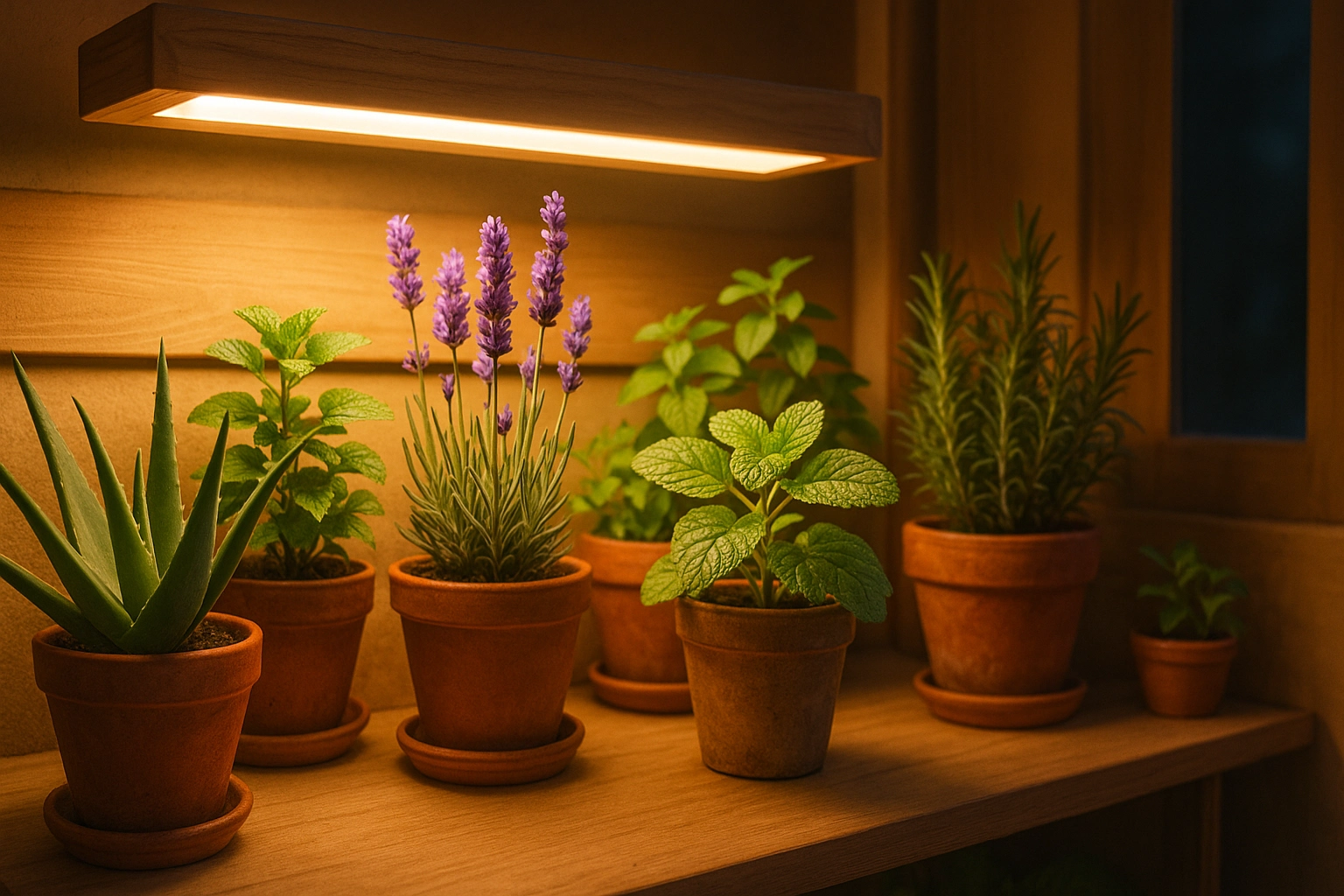
Grow wellness at home with these healing herbs and natural remedies. Indoor-friendly and LED-optimized for modern living.
Aloe Vera (Aloe barbadensis)
- Uses: Skin healing, burns, moisturization
- Light: Bright indirect or 12-14 hrs LED daily
- How to Use: Snap a leaf and apply gel directly to skin
- Caution: Do not ingest latex near leaf base
Lavender (Lavandula angustifolia)
- Uses: Anxiety relief, sleep aid, aromatherapy
- Light: Full sun or 14 hrs under LED
- How to Use: Dried flowers in sachets or tea; essential oil
Holy Basil (Tulsi) (Ocimum sanctum)
- Uses: Immunity, stress relief, respiratory support
- Light: Bright light 12-16 hrs daily
- How to Use: Brew leaves into tea or chew fresh
Lemon Balm (Melissa officinalis)
- Uses: Calming, digestion, antiviral
- Light: Moderate light, 12 hrs LED cycle
- How to Use: Steep in tea or crush leaves for scent
Chamomile (Matricaria chamomilla)
- Uses: Sleep, stomach upset, inflammation
- Light: Full sun preferred or 12-14 hrs LED
- How to Use: Dried flowers brewed into calming tea
Peppermint (Mentha x piperita)
- Uses: Headaches, digestion, fresh breath
- Light: Bright indirect or 12 hrs LED
- How to Use: Crush leaves for tea or oil extraction
Rosemary (Rosmarinus officinalis)
- Uses: Memory, circulation, antimicrobial
- Light: Strong light 14 hrs LED preferred
- How to Use: Add to food, brew for hair rinse
Calendula (Calendula officinalis)
- Uses: Skin repair, minor cuts, rash relief
- Light: Full sun or 12 hrs LED
- How to Use: Infuse petals into oils or balms
Thyme (Thymus vulgaris)
- Uses: Cough relief, antiseptic, culinary
- Light: High light 12-14 hrs LED
- How to Use: Brew tea or add to food for medicinal support
Gotu Kola (Centella asiatica)
- Uses: Skin healing, memory, anxiety
- Light: Partial shade or 10-12 hrs soft LED
- How to Use: Eat fresh leaves or use topically
Lighting Tips for Healing Herbs
- Use full-spectrum LED grow lights that mimic daylight.
- Most herbs thrive with 12-16 hours of light daily.
- Position LEDs close but not touching plant tops.
- Rotate plants weekly to ensure even growth.
- Pair with natural sunlight when possible.
More in the Plant Zone
Frequently Asked Questions
Search all plant-related questions below. Answers update as you type. Click "Next" for more.
Ask a Question
All questions are reviewed before publishing.
Expert Take
"Optimizing both spectrum and intensity is key to uniform, nutrient-dense microgreens," says agronomist Dr. Lina Patel. "Even budget fixtures can outperform sunlight when properly tuned."
